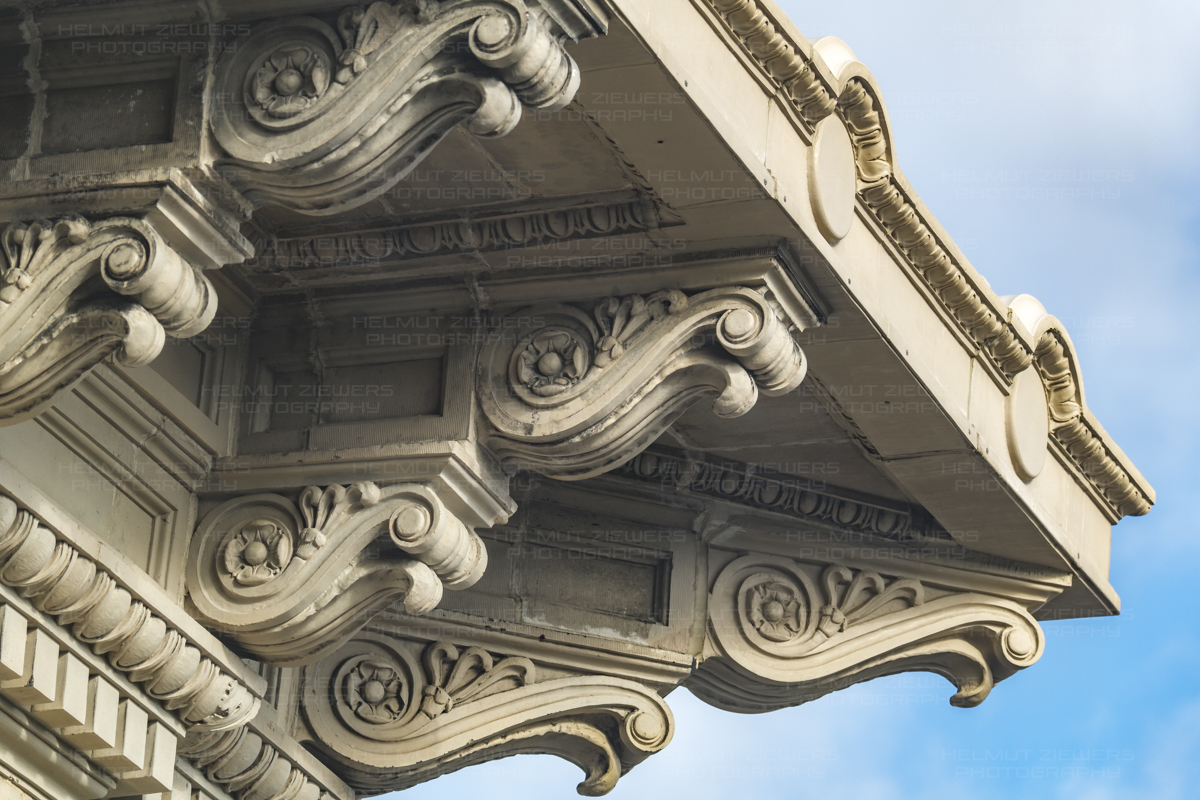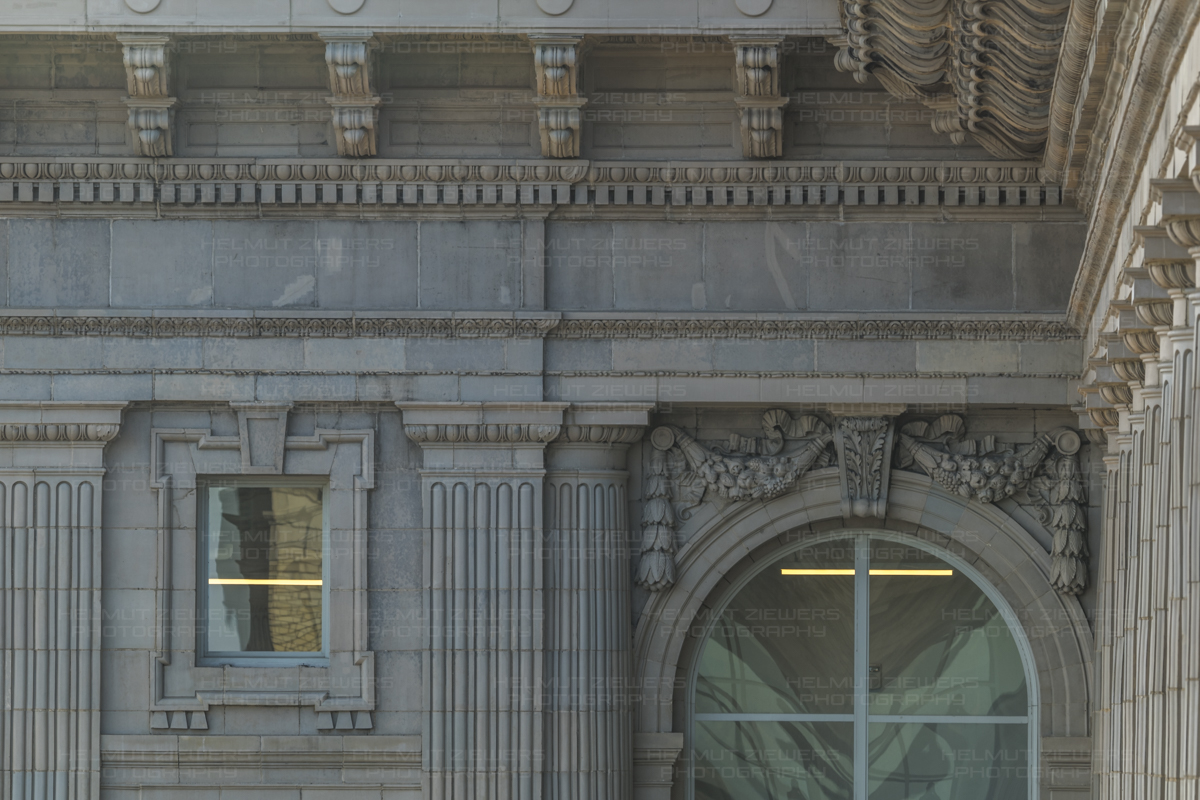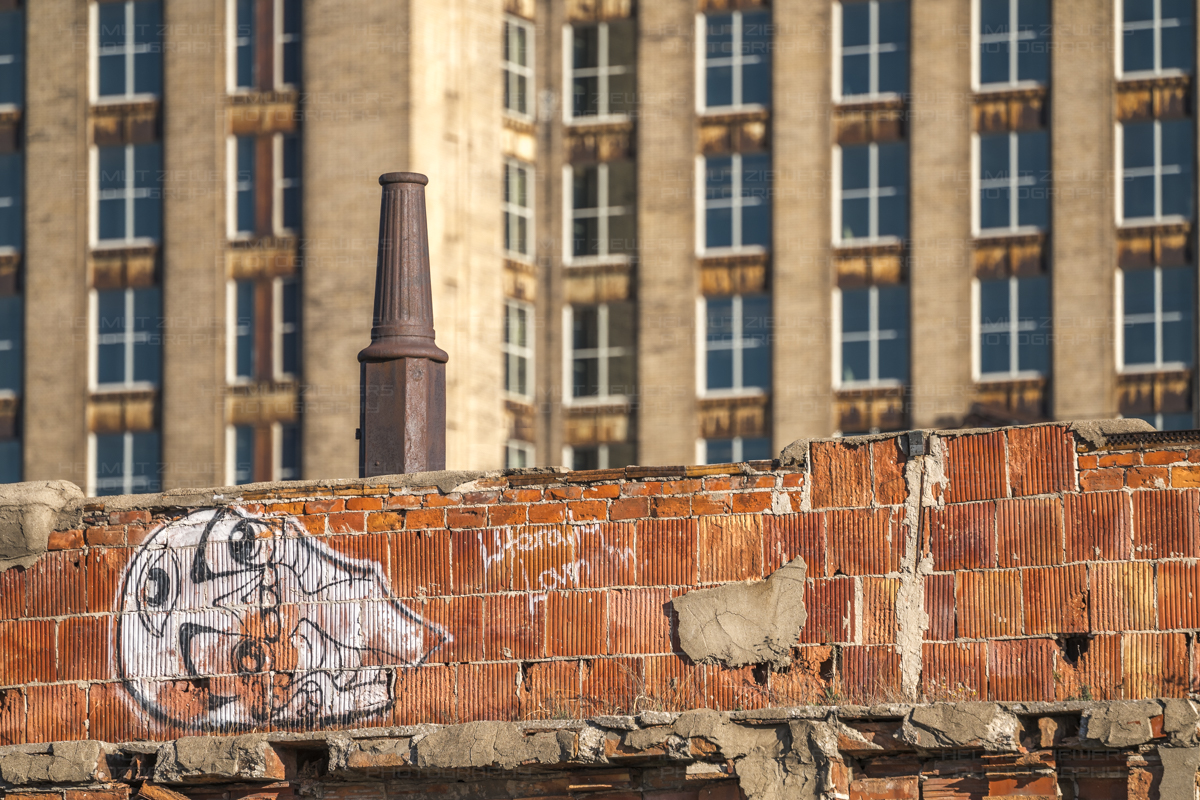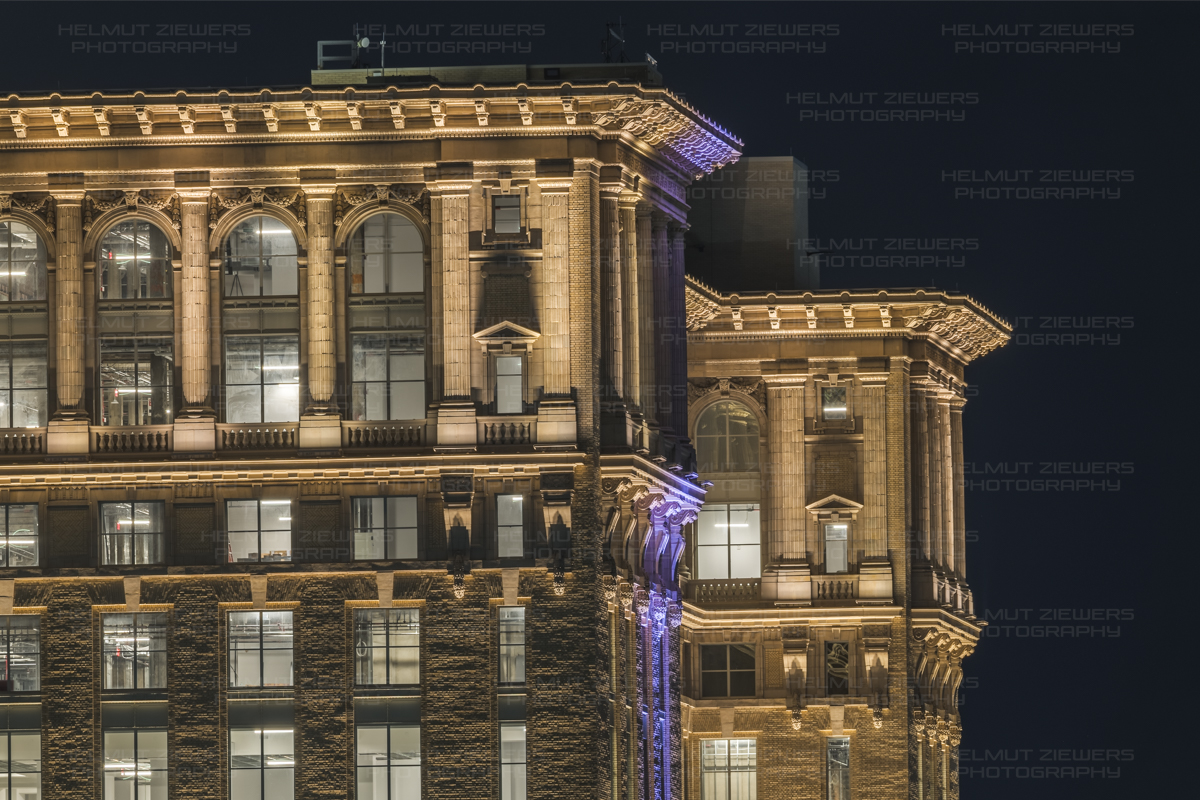Michigan Central Station - (Exterior details - post-renovation)
Michigan Central Station

To restore the cornice elements and replace damaged units, Glass Fiber Reinforced Polymer (GFRP) was utilized. Molds were crafted from original terra cotta pieces, and great care was taken to refine the color, ensuring that the new units seamlessly blend with the original, freshly cleaned terra cotta.

Michigan Central Station's projecting cornice and decorative facade elements on the upper floors are crafted from terra cotta, meticulously designed to emulate the appearance of carved stone.

Cornice detail. Image from Feb 12, 2024

North facade columns photographed on Feb 12, 2024

Full Moon over Michigan Central Station on Aug 1, 2023. This is a one image shot taken with a 600mm lens.

Facade detail photographed on Feb 12, 2024

Facade detail photographed on Feb 12, 2024

Facade detail photographed on Feb 12, 2024

Facade detail photographed on Aug 28, 2023

A view at the upper reaches of the southeast corner on Aug 15, 2023. An common guest :-) admiring the stunning restoration work that was done.

Michigan Central Station stands out for its extensive array of windows, which light up the expansive 500,000-square-foot space with natural light. The most striking ones are the three monumental 40-foot-tall windows found in the station’s Main Waiting Room, adding to the architectural splendor of the space.

After decades of neglect, extensive water damage, vandalism, and looting, only the original structure of the windows survived in Michigan Central Station’s Main Waiting Room. Nearly all the glazing was shattered or absent, the operating mechanisms were impaired, and a significant portion of the decorative rosettes and filigree that adorned the windows were either missing or damaged beyond repair.

To recreate the decorative border, the restoration team required detailed information of the original elements, which wasn’t available. Fortunately, one of the building's original rosettes was found at a local antique store so 3D printing technology could be used to replicate the original elements.

This image offers a close-up view at the northeast corner of the Main Waiting Room exterior with special lighting on Jun 24, 2023

New steel replaced the rotted sections on the lower part of the 14 columns, while much of the original 1913 riveted lattice steel above has been preserved.

Limestone blocks at the carriage house were all cleaned, re-mortared and then re-set by bricklayers and craftworkers.

Detail shot of MCS's plain bricks exterior in May 2024. According to a DBUSINESS report from 2017, the structure required 7,000 tons of structural steel, about 125,000 cubic feet of stone, 1.5 million facing bricks, and 7 million plain bricks.

To maintain the station's aesthetic integrity, terra cotta was originally chosen for the projecting cornice and decorative facade elements on the upper floors, mimicking the appearance of carved stone. However, due to severe damage, Glass Fiber Reinforced Polymer (GFRP) was utilized to replicate these cornice elements and replace units that were compromised. This material substitution ensured both durability and visual continuity with the original design.

One vintage photo showcases a "Lionel-style" gooseneck light pole. These poles originally supported extremely bright carbon-arc lighting fixtures. Two of the cast-iron bases still exist, with one visible in this image from Nov 12, 2016

When MCS opened in late 1913, it was the tallest train station in the world. Image from May 2024.

Here's a close-up but wide-angle view at the main (north) entrance leading to the Main Waiting Room. The original awning was removed many years ago after it was hit by a truck, so this is a replacement.

This photo offers a detailed look at the canopy above the main (north) entrance. Photo taken inMay 2024

This photo provides a close-up view of one of the three massive windows on the north facade that illuminate the Main Waiting Room.

This image provides a detailed view at MCS's west elevation in early Apr 2024 with the new "Residences at Water Square" tower on the right.

Here's a view at the southwest upper facades looking east. Image from April 2024.

This image was taken from a rooftop west of MCS during a spectacular sunrise in early Feb, 2024

The rails included in the bench design were removed during various phases of track demolition at the station. Once the bench design was proposed, the best pieces from the piles of rail were carefully selected handed over to skilled iron workers at Midwest Steel (known for their carriage house ironwork), they crafted the large rail benches that now enhance the station's east side. Picture taken in August 2024.

The rails included in the fence design were removed during various phases of track demolition at the station. Once the fence design was proposed, the best pieces from the piles of rail were carefully selected handed over to skilled ironworkers at Midwest Steel (known for their carriage house ironwork), they crafted the fence bollards and large rail benches that now enhance the station's east side. Picture taken in August 2024.

Michigan Central Station's main entrance on Nov. 16, 2024

Michigan Central Station's "The Shop" on Nov. 16, 2024

The Shop - near the east entrance on Nov. 16, 2024

Holiday decorations starting to display on Nov. 16, 2024